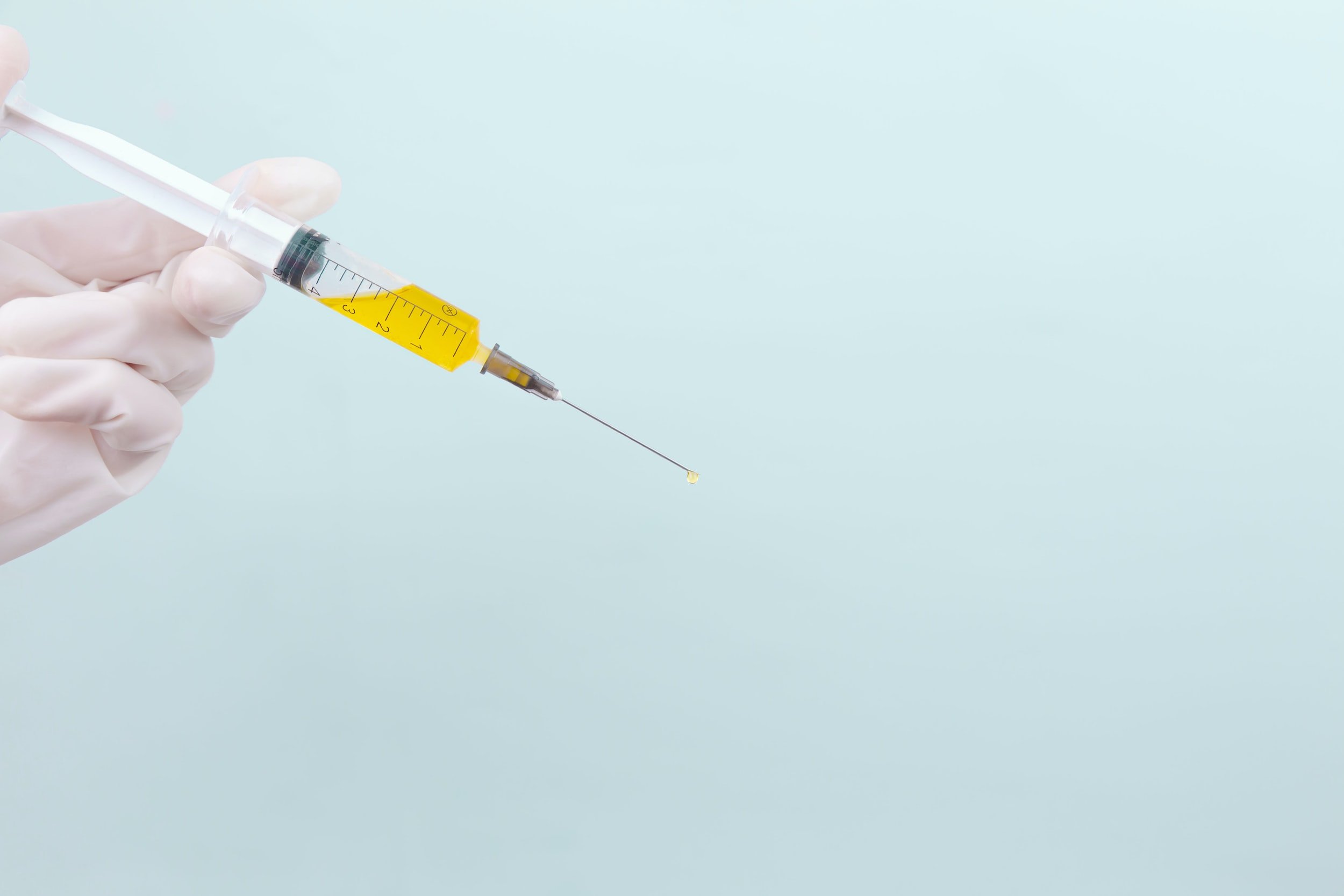
PRP and PRF Treatments by Registered Nurses in the Comfort of Your Own Home in London
If you're looking for a solution to enhance your healing and improve your overall well-being, Platelet-Rich Plasma (PRP) and Platelet-Rich Fibrin (PRF) treatments may be the answer. These cutting-edge medical treatments use the growth factors in a person's own blood to aid in tissue regeneration and healing, and now, registered nurses in London are bringing these treatments to the comfort of your own home.
PRP and PRF treatments begin with collecting a patient's own blood, which is then processed to concentrate the platelets and growth factors. The processed blood is then used to create a fibrin matrix that is placed in the affected area to promote healing and tissue regeneration. The growth factors in the PRP/PRF work to stimulate cell growth, enhance the healing process, and reduce inflammation, leading to improved healing and a reduction in pain.
One of the biggest advantages of having PRP and PRF treatments by registered nurses in your home is the convenience factor. No longer do you need to travel to a medical facility, wait in long lines, or take time off from work. Registered nurses in London can perform the treatments in the comfort of your own home, saving you time and reducing stress.
Another benefit of having these treatments at home is the personalized attention you receive from the registered nurse. During the treatment, the registered nurse can answer any questions you may have and address any concerns you may have about the process. This personalized attention can help put you at ease and improve your overall experience.
PRP and PRF treatments have been shown to be effective in the treatment of a wide range of conditions, including:
Dental extractions and implant placement
Bone grafting
Facial rejuvenation
Wound healing
Platelet-rich fibrin (PRF) and platelet-rich plasma (PRP) are similar in their premise and application but differ in how the effects are achieved. For quite a while, PRP dominated as the only viable platelet-based therapy for regeneration. But in recent years, PRF has proven to be as effective as PRP, if not better.
While PRP and PRF treatments are relatively new, they have shown promising results in numerous clinical studies and have been well-received by patients and healthcare providers alike. However, as with any medical treatment, PRP and PRF may not be appropriate for everyone, and it is essential to consult with a healthcare provider to determine if it is right for you.
In conclusion, PRP and PRF treatments by registered nurses in the comfort of your own home in London provide a convenient and personalized solution for those seeking to enhance their healing and improve their overall well-being. With their minimally invasive nature, coupled with the use of a patient's own blood, PRP and PRF treatments are a safe and promising alternative to traditional treatments. If you're in London and are looking for a convenient and effective solution for your medical needs, PRP and PRF treatments by registered nurses may be the right option for you.
PRP & PRF at a Glance
What are PRF and PRP?
Platelet-rich fibrin or PRF is a process in which a natural solution is prepared by extracting blood from the patient and using the processed product by injecting it into affected areas of the skin. Showing great potential for rejuvenating the skin, this method can be an effective way to prevent deep facial hollows and fine lines organically. PRF may also improve the texture of the skin when combined with microneedling.
Meanwhile, PRP stands for platelet-rich plasma and makes use of the regenerative factors present in the patient’s own blood such as platelet and plasma to potentially aid in exfoliation and improving skin appearance. PRP therapy employs injections to concentrate platelets from each patient’s blood to speed up the healing process of injured tendons, ligaments, muscles, and joints.
Similarities in Treatment Between PRF and PRP
Novel, platelet-based treatment procedures: Both PRF and PRP have garnered great renown as promising treatment procedures in aesthetic and regenerative medicine.
Rich in special proteins: There are special proteins known as growth factors that enable the body to regenerate and heal itself. Both PRF and PRP are rich in these growth factors which are obtained by processing blood. These growth factors are then employed to potentially regenerate affected areas through cosmetic procedures for aesthetic purposes.
Autologous platelet concentrates: Platelet-rich fibrin (PRF) and platelet-rich plasma (PRP) are both prepared using the patient’s own blood and are hence known as autologous platelet concentrates. This blood is obtained by taking blood samples from the patient prior to performing the procedure.
Potentially alternative solutions for aesthetic issues: Both PRF and PRP are considered to potentially improve the overall skin appearance and may help cure conditions such as acne scarring, dark spots, and aged skin by focussing on toning and moisturising the skin.
PRF vs PRP: Which Is Considered to Be Better?
There’s a general consensus amongst the medical community that PRF has a distinct edge over PRP. Here are some of the reasons why PRF is considered to be better than PRP:
Due to the lack of adding coagulants, the preparation process of PRF is more straightforward and less convoluted. It also has the advantage of not using external additives to manipulate the concentration.
The higher concentration of platelets (about 3 to 5 times) of PRF makes it a more potent solution.
PRP has more stem cells, healing factors, and has a reduced risk of blood cells experiencing trauma or damage.
It’s still recommended that patients consult with their doctors to determine which procedure suits their skin conditions better.
Important Differences Between PRF and PRP
Even though PRF and PRP may sound similar, there are important differences in how they are prepared and how they work. Patients usually determine which procedure suits them better based on the severity of their issue and their doctor’s recommendation. Here is a table of differences between PRF and PRP:
PRF
They’re an autologous platelet concentrate made using a patient’s blood and making it rich in growth factors, platelets, and fibrin.
During spinning the patient’s blood in a centrifuge, PRF is processed at a significantly slower rate.
As such, PRF is rich in healing factors such as white blood cells, stem cells, and fibrin.
The final PRF solution has a greater number of platelets due to the slower processing speed.
Clots are allowed to be formed during the processing of PRF
The fibrin concentration causes the PRF solution to be in the form of a matrix or scaffold. This enables the platelets to be released at a much slower rate.
PRP
They’re an autologous platelet concentrate made using a patient’s blood and making it rich in growth factors and platelets.
During spinning the patient’s blood in a centrifuge, PRP is processed at a significantly faster rate.
Due to the high speeds, heavy components sink while lighter components such as platelets and plasma are recovered to make PRP.
The final PRP solution has a lower number of platelets which are also lighter due to the faster processing speed.
Anticoagulants are used to prevent clotting during the processing of PRP
Due to the usage of anticoagulants and the lack of fibrin in the final PRP product, PRP is known to release the platelets and growth factors at a much faster rate.
Get in touch.
Please enter your details and someone will get back to you as soon as possible.






